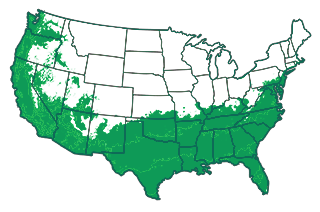About
Peter's Honey Fig is renowned for its rich honey-like flavor and adaptability to diverse climates.How tall does a Peter's Honey Fig tree grow?
Peter's Honey Fig trees typically reach heights of 15 to 25 feet, establishing a moderate presence in any landscape. Regular pruning helps manage their height to suit personal garden aesthetics and space constraints. This manageable size makes them suitable for small to medium-sized gardens and orchards.How long does a Peter's Honey Fig tree live?
Peter's Honey Fig trees can live for several decades with proper care, rewarding gardeners with plentiful harvests year after year. Consistent pruning, watering, and fertilization contribute significantly to their longevity. Most trees enjoy productive lifespans, providing delicious fruit for 30 to 50 years.How fast do Peter's Honey Fig trees grow?
Peter's Honey Fig trees are moderate growers, typically adding a foot or so of new growth annually under optimal conditions. Their growth rate can accelerate in favorable climates with rich soil and regular care. Pruning and fertilization play essential roles in supporting healthy, vigorous growth.How to care for Peter's Honey Fig trees?
Caring for Peter's Honey Fig trees involves consistent watering, attentive fertilization, and regular maintenance of their surroundings. Mulching around the base conserves moisture, regulates soil temperature, and prevents weed growth. Monitoring for pests and diseases and responding promptly ensures your trees remain healthy and productive. Proper care will result in a garden filled with luscious fruits and vibrant foliage.When to prune Peter's Honey Fig trees?
Prune Peter's Honey Fig trees in late winter or early spring before new growth begins. This timing allows the tree to conserve energy during dormancy, promoting robust growth when it reawakens. Pruning during this period helps shape the tree and remove any damaged or diseased branches.How to prune Peter's Honey Fig trees?
To prune Peter's Honey Fig trees, focus on removing dead, damaged, or crossed branches to enhance air circulation and sunlight penetration. Make clean cuts just above a bud or branch junction to encourage healthy new growth and reduce disease risk. Maintain a balanced approach by removing no more than a third of the tree's overall growth annually.Why do we like Peter's Honey Fig?
Peter's Honey Fig is beloved for its rich, sweet fruit that offers a delightful taste reminiscent of honey, making it a favorite among fig enthusiasts. Its versatility and ability to thrive in various climates make it an excellent choice for gardeners worldwide, promising both beauty and bounty.| Mature Size | 15–25 ft tall × 15–20 ft wide |
| Sunlight | Full (6-8 hours) |
| Spacing | 15–25 ft |
| Harvest Season | August to September |
| Pollination | Self-pollinating |
| Uses | Fresh eating, preserves, baking |
| Water Requirements | Moderate; moist, well-drained soil |

Growing Zone: 7-10
Choose a location with full sun exposure and well-draining soil for planting your Peter's Honey Fig. Dig a hole twice as wide and as deep as the root ball, ensuring there's enough space for the roots to spread comfortably. Amend the soil with compost or aged manure before backfilling to enhance fertility and structure for optimal growth.
The ideal time to plant Peter's Honey Fig trees is in late winter to early spring, allowing the tree to establish its roots before the active growing season. Plant during this period to take advantage of the warmer temperatures that support root development and foliage growth. Avoid planting in late fall or winter to prevent cold damage that can hinder growth.
Plant Peter's Honey Fig trees 15 to 25 feet apart, considering their mature size and the space they need to fully develop. This spacing ensures adequate sunlight reaches each tree and facilitates healthy air circulation, reducing the risk of disease. Adequate spacing also allows you to manage and harvest the trees more comfortably.


